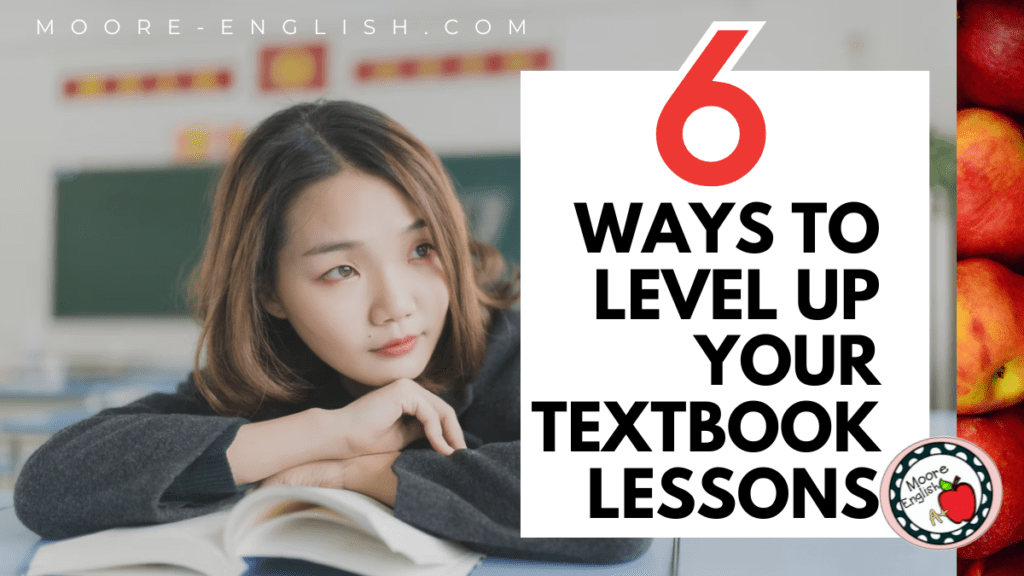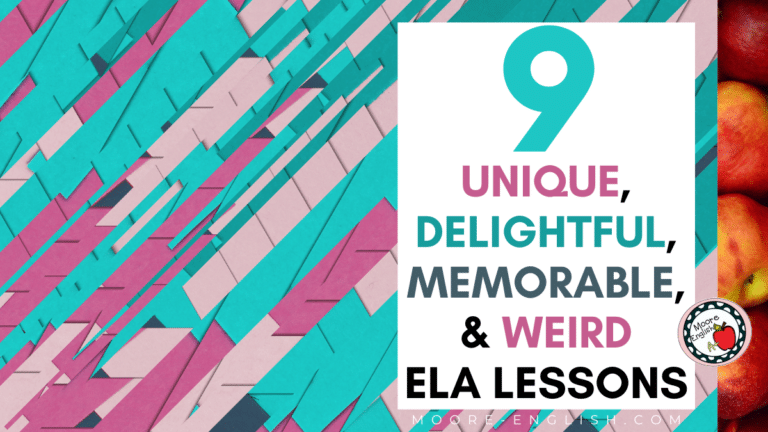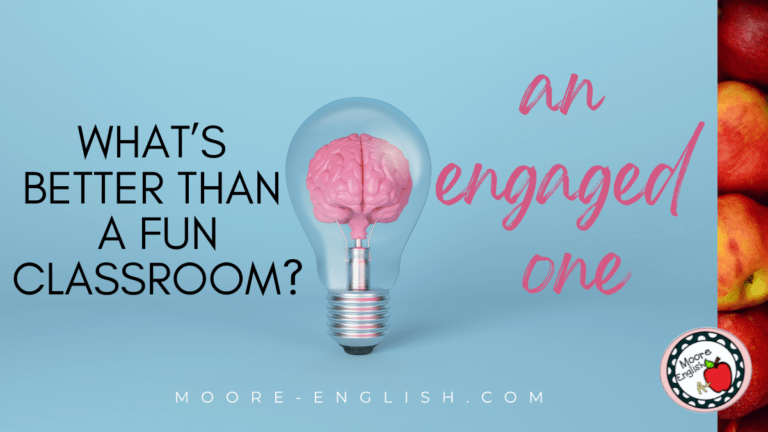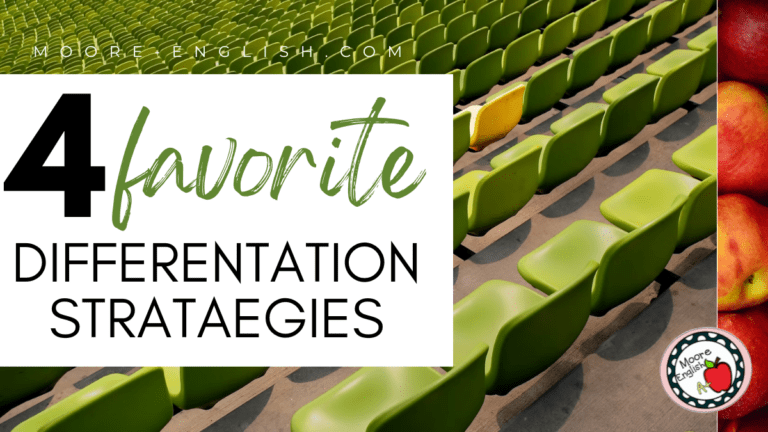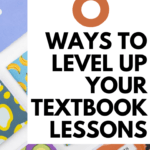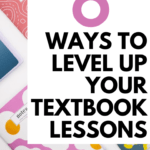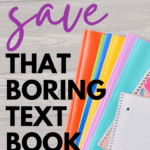Recently, I observed a colleague teach a textbook lesson. He read a passage from the textbook, and students answered questions. It was exactly what was outline in the textbook. But it was horribly boring!
Now, it was the end of the school year, and he was trying to cover a lot of content in a limited amount of time.
Nevertheless, as I sat there, I thought of 6 quick, easy ways to maximize a dull textbook lesson.
This post this post may contain affiliate links. Please read the Terms of Use.
Making a Meal of a Textbook Lesson
Textbooks can be great tools, so this is not a post about replacing or ditching textbooks. However, like any tool, a textbook lesson is only as great as you make it. As I watched my colleague struggle to engage students, I flipped through the textbook and glanced at the ready-made questions. Were they the greatest questions ever written? No, but they were already there! They required no design work.
So the quickest way to improve a textbook lesson is to divide up the questions in some way and make students accountable. Give them some skin in the game. Here are some quick options:
- Inside-outside circle: Each student has a partner. One person stands inside the circle and faces their partner in the outside ring of the circle. Together, they discuss the first question. After a minute, one of the partners rotates, and the new partnerships discuss the second question.
- The Anti-Cold Call: Instead of cold calling on students, assign each student or group of students a question and make them responsible for sharing that answer with their classmates.
- Student-designed questions: Assign each student or group of students a question type (multiple-choice, matching, gap fill) and a skill (main idea, point of view, context clues) and ask them to write a question for the passage. They share the question with their peers and guide them through the answer options.
My favorite thing about these three options is that each one can elevate a textbook lesson with minimal extra work from the teacher! These are ready-made strategies that lend themselves to any textbook lesson. As a bonus, they also work for days when technology fails.
Add Collaboration to Your Textbook Lesson
The textbook lesson I observed was dull because students were not engaged with the text or with each other. Teachers can quickly add interest to a lesson by providing some time for students to engage in conversation.
- First, students can annotate to engage in conversation with a text. To annotate a textbook, teachers can make copies, use guided annotations like these, or use plastic sleeves and erasable markers. Students can then share their annotations with an elbow partner.
- Teachers can also divide students into groups and ask each group to lead annotations on a specific section of text. I often pair this strategy with collaborative Google Slides, so students share digital rather than paper annotations. Earlier, I mentioned students designing their own questions. These questions can also become part of a shared slidedeck.
- Finally, task cards can easily work with a textbook lesson. I have task cards for a huge variety of texts!
Adding Movement to Your Textbook Lesson
Meaningful classroom movement can also elevate a dull textbook lesson. To add movement may take a little bit of prep, but not much. All of these strategies require is chart paper and markers!
- First, turn those student-designed questions into a gallery walk! Each group writes their question and answers on a chart paper, and the other groups rotate through attempting to answer.
- For a gallery walk variation, teachers can write each question from the textbook on chart paper. Then, students rotate through the questions and either write their answers on the chart paper or use sticky notes to respond.
- Finally, some texts lend themselves to graphic organizers. Divide students into groups, and each group can design a graphic organizer to share with the class. This is a bonus if the text eventually becomes the foundation for a writing assignment because the graphic organizer is a ready-made outline!



